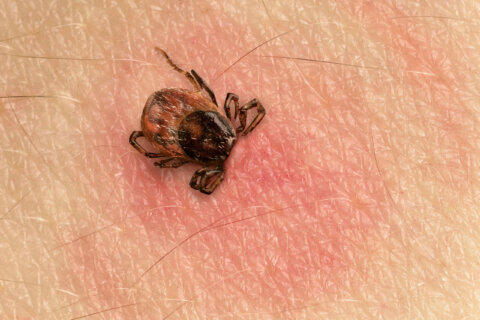Melanoma is the most deadly form of skin cancer, but it can often be found early, when it’s likely to be cured — and doctors say most skin cancers can be prevented.
“‘Melanoma Monday’ is all about awareness and prevention — really we’re focused on early diagnosis,” said Allison Larson, chair of Dermatology at MedStar Health, and MedStar Washington Hospital Center in the D.C. region.
As of 2023, the American Cancer Society estimates about 98,000 new melanomas will be diagnosed nationwide, and approximately 8,000 people will likely die.
Larson said the goal is to prevent melanoma from developing: “The largest risk factor for melanoma is UV exposure — sunlight.”
“The way to prevent melanoma is UV protection, which for most people comes in the form of sunscreen, but there’s also sun-protective clothing, which has UPF (ultraviolet protection factor),” said Larson.
Certain people are at particular risk of developing melanoma.
“Folks with lighter skin and lighter hair, especially red hair, are at higher risk,” said Larson. “People who have a history of blistering sunburns and a lot of sun exposure are at higher risk.”
In addition, people who are on medications that suppress their immune systems are at increased risk, she said.
“Your immune system fights off infections, but it also fights of cancers, including skin cancers, so those folks need to be particularly careful and we need to screen those people regularly,” Larson said.
Indoor tanning is “a major risk for skin cancer development, including melanoma,” Larson said.
There’s an addictive element in tanning, she said, either in the sun or tanning beds.
“It releases endorphins, it links in your reward system,” Larson said. “I’m not at all surprised that people still want to do it. They not only like the look of it on their skin, but they like the way it makes them feel.”
However, Larson said heavy exposure to UV rays over years can cause problem later in life.
“We think about childhood sun exposure, and blistering sunburns in childhood is a major risk factor for skin cancer in adulthood,” she said. “It often takes many decades before skin cancer will manifest.”
Larson said avoiding the sun and UV exposure — midday is the time with the highest risk — is a healthy way to minimize risk.
“You can buy a tan in a bottle these days,” said Larson. “In the beginning, there were a lot of artificial tans that were very orange and a bit unnatural looking.”
A lot has changed, Larson said.
“These days they’re very natural looking,” she said. “They look like a tan you would get in the sun, and it is completely safe.”








